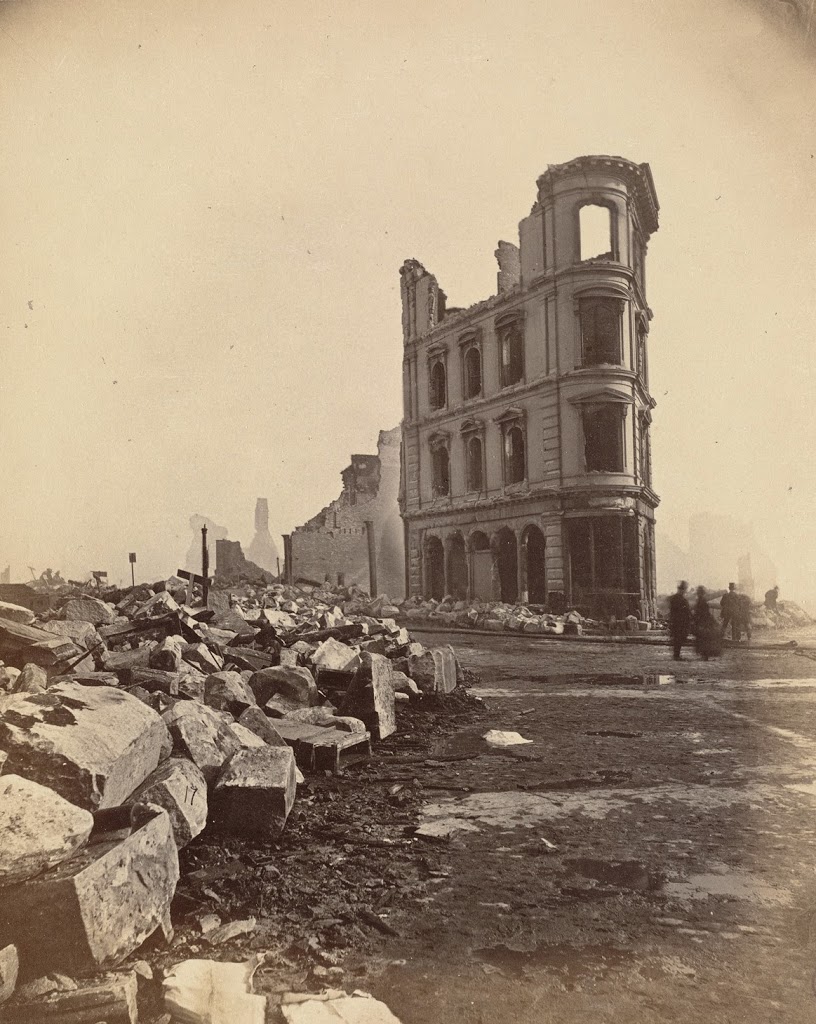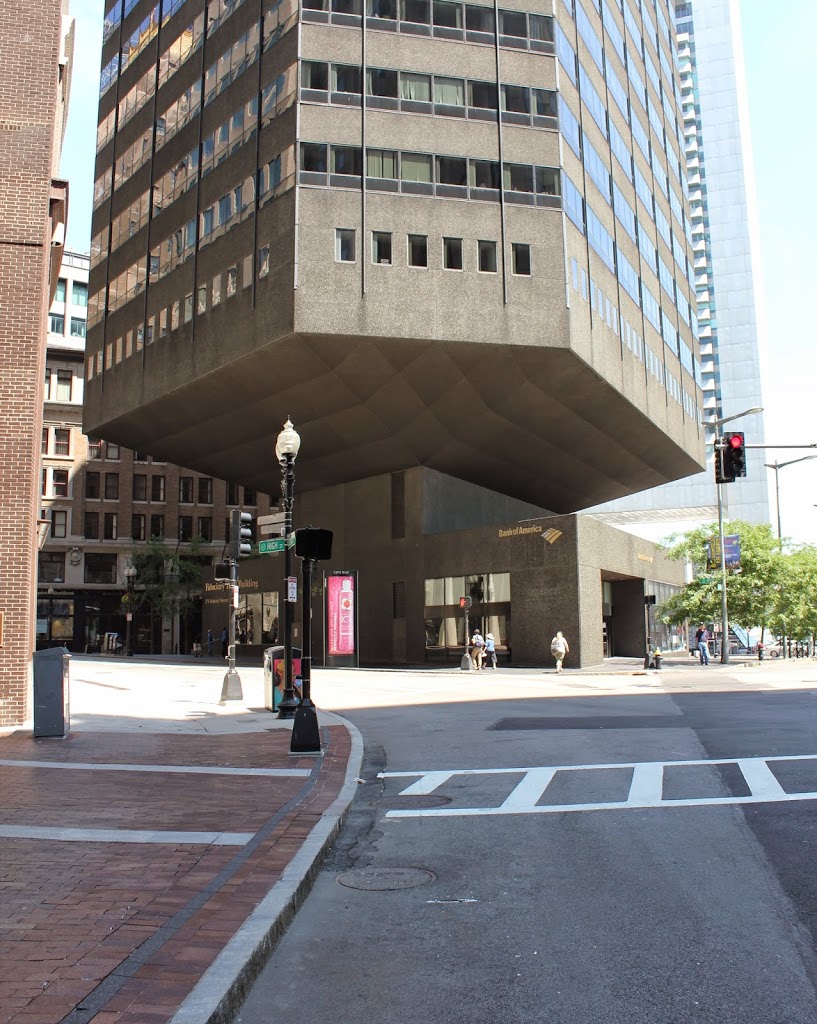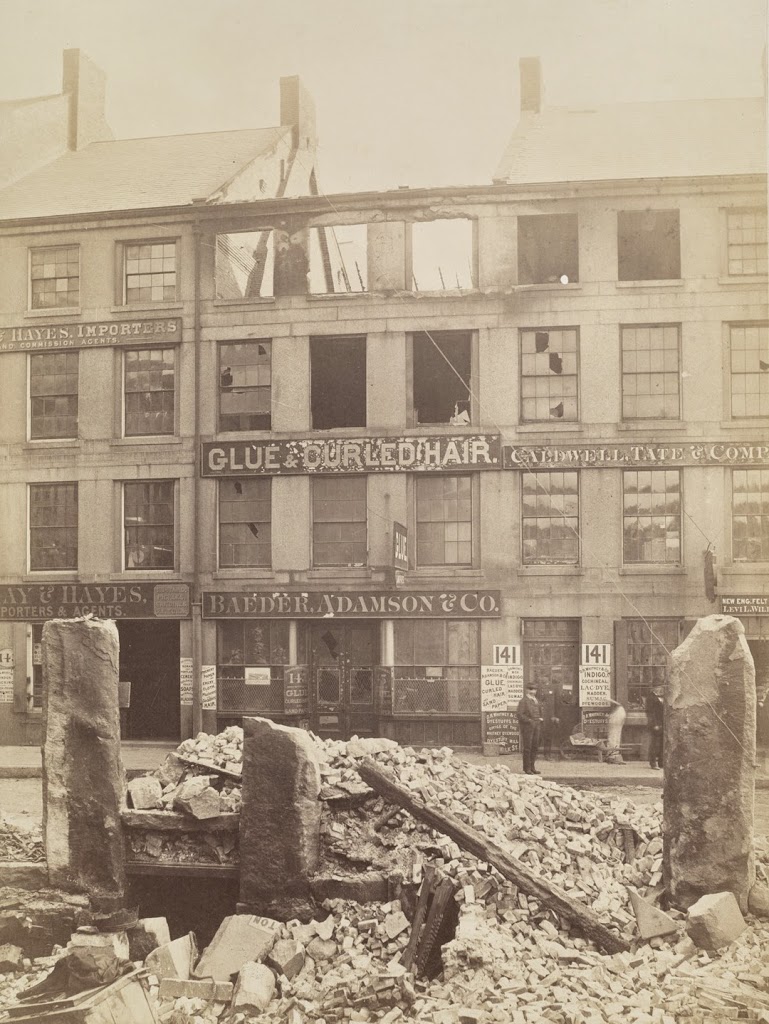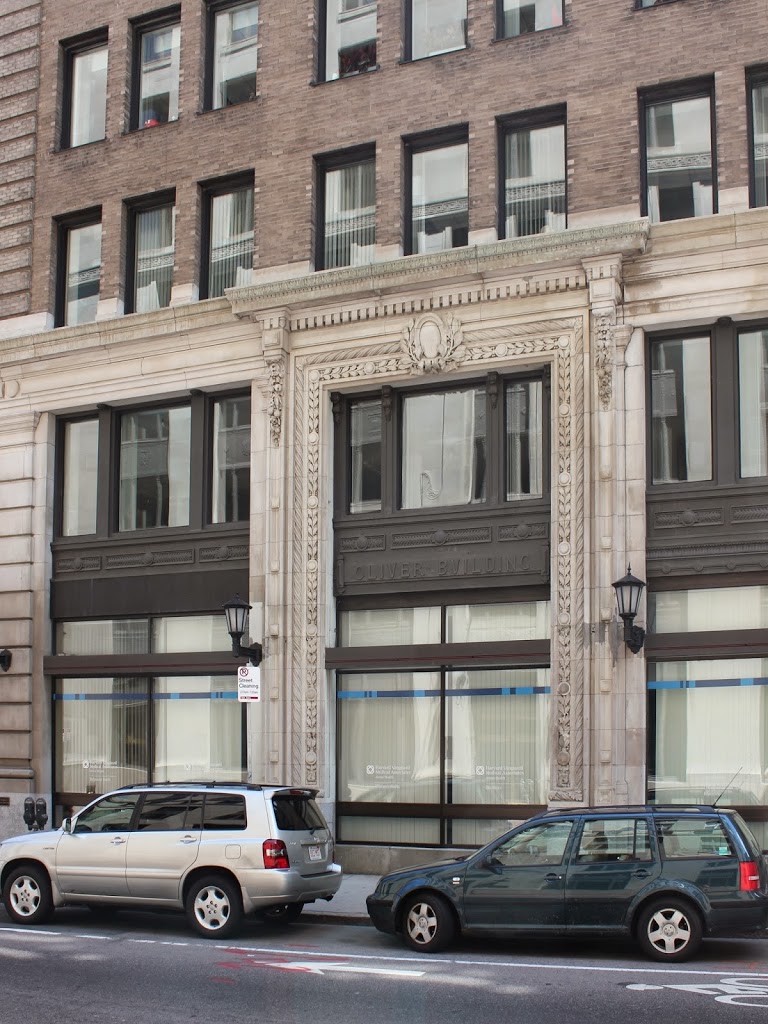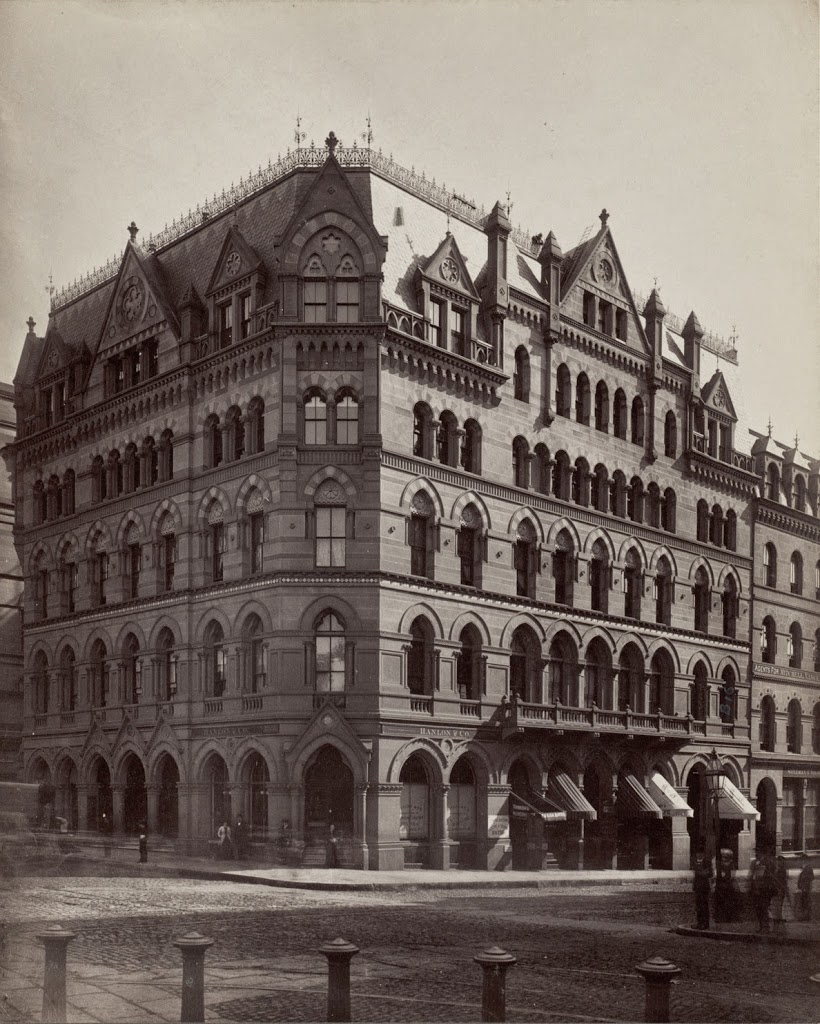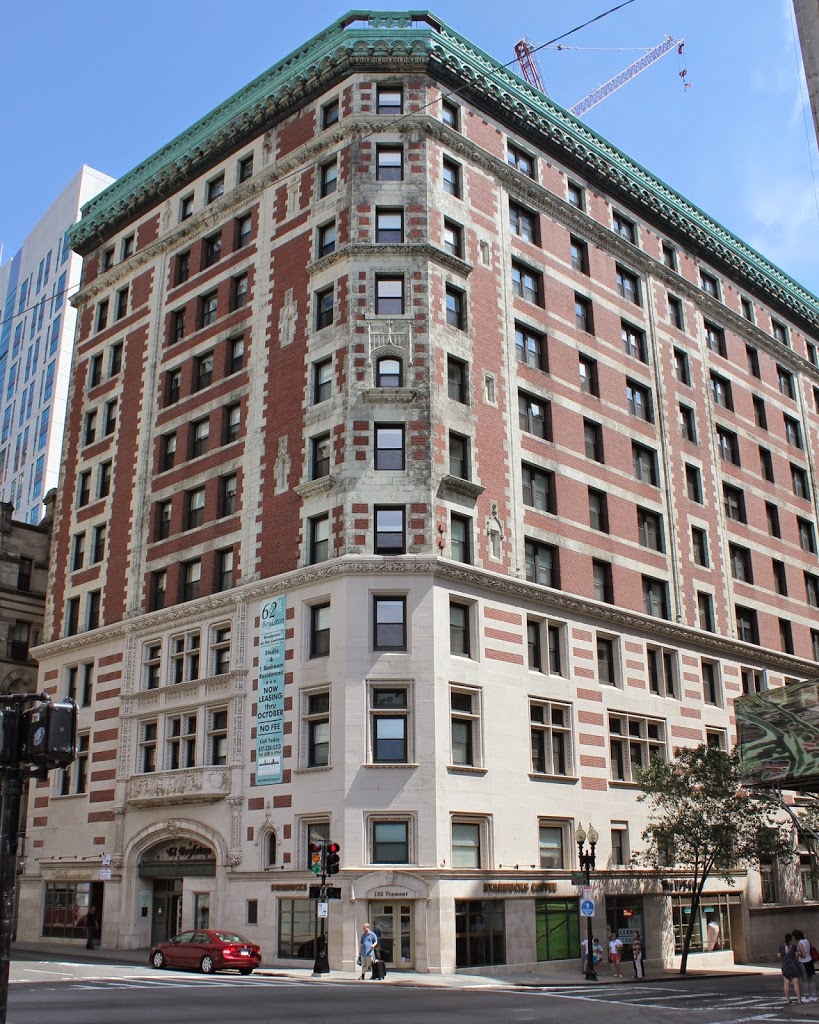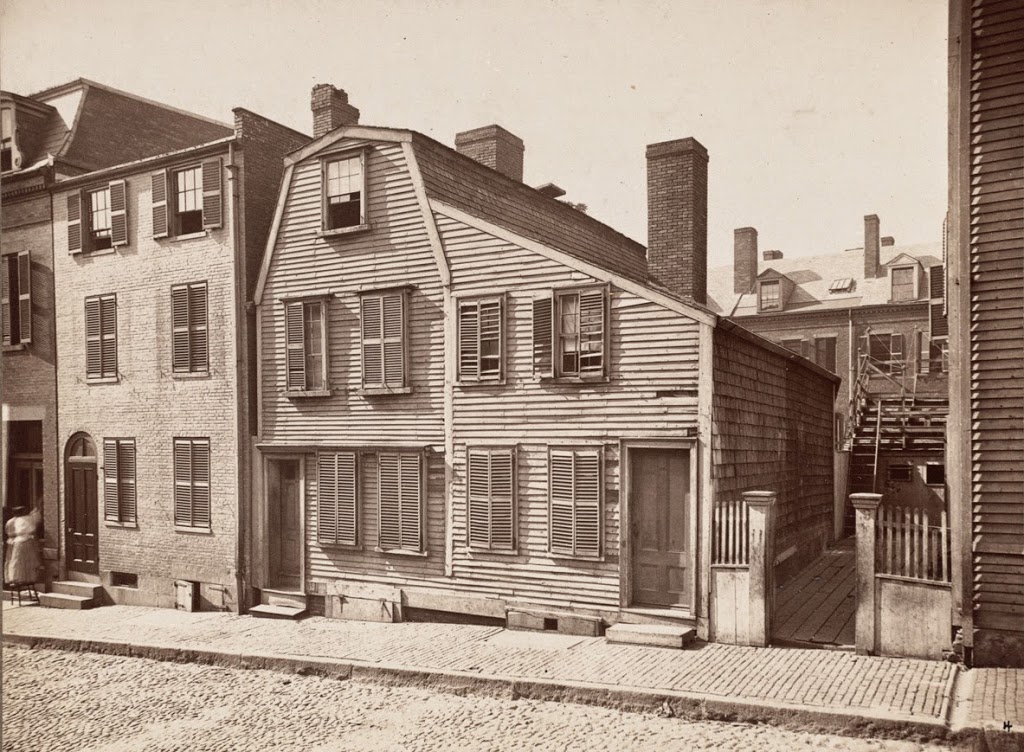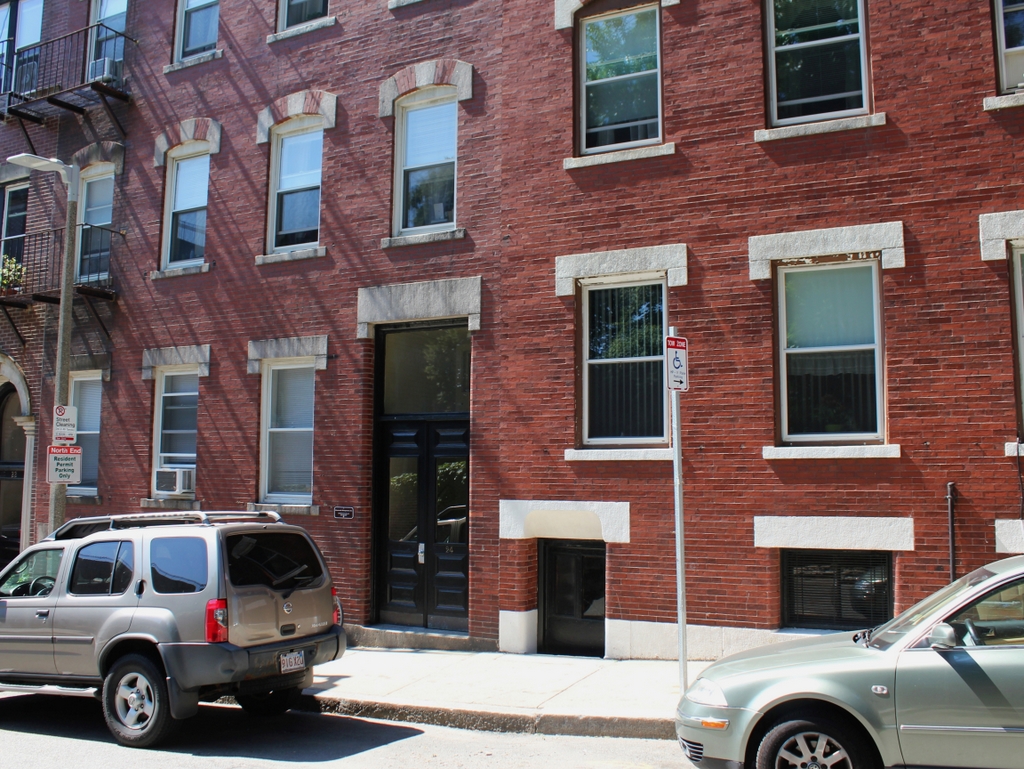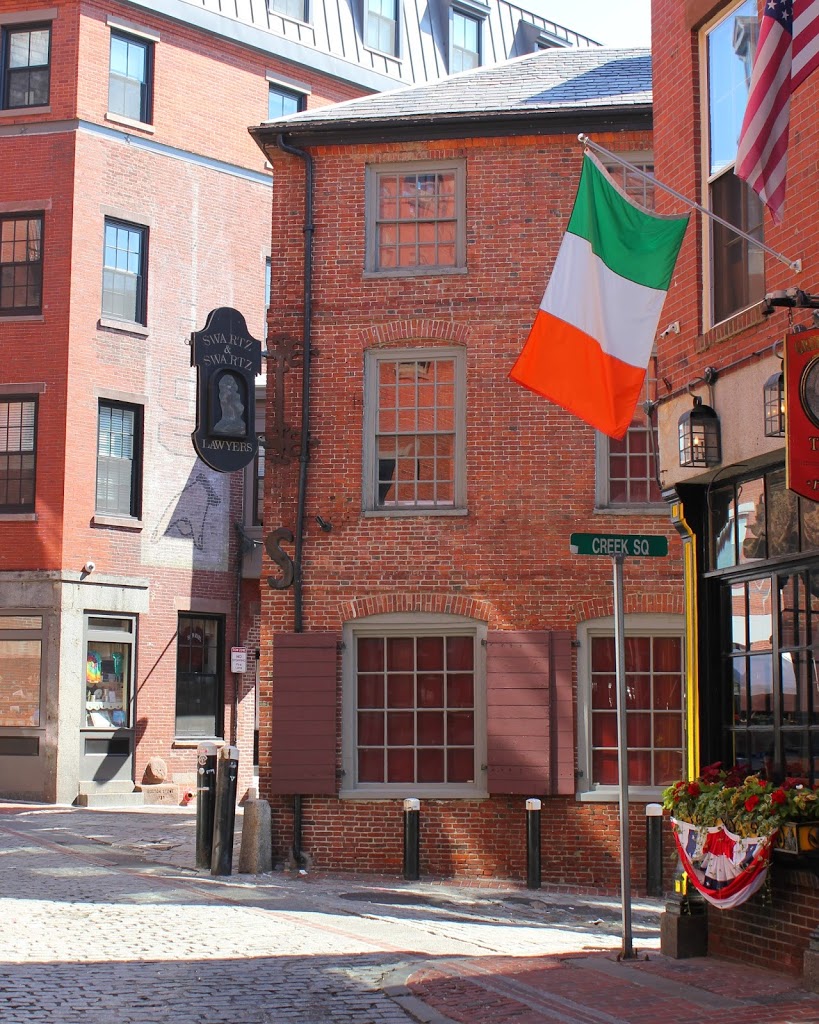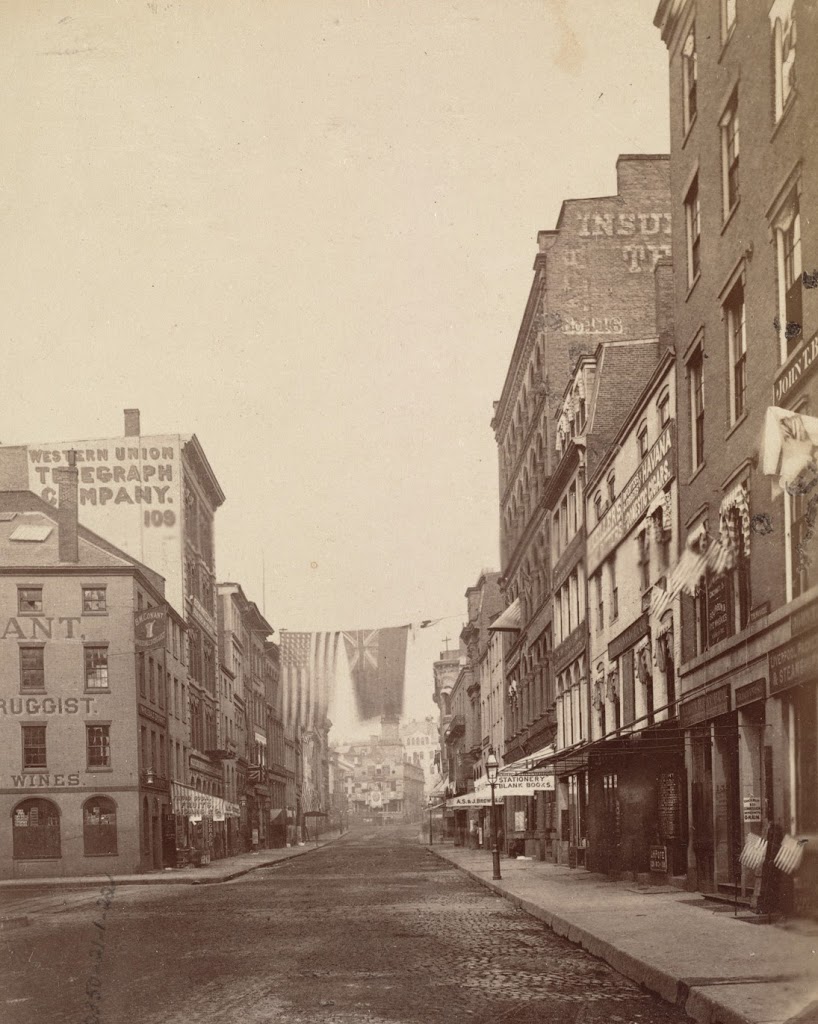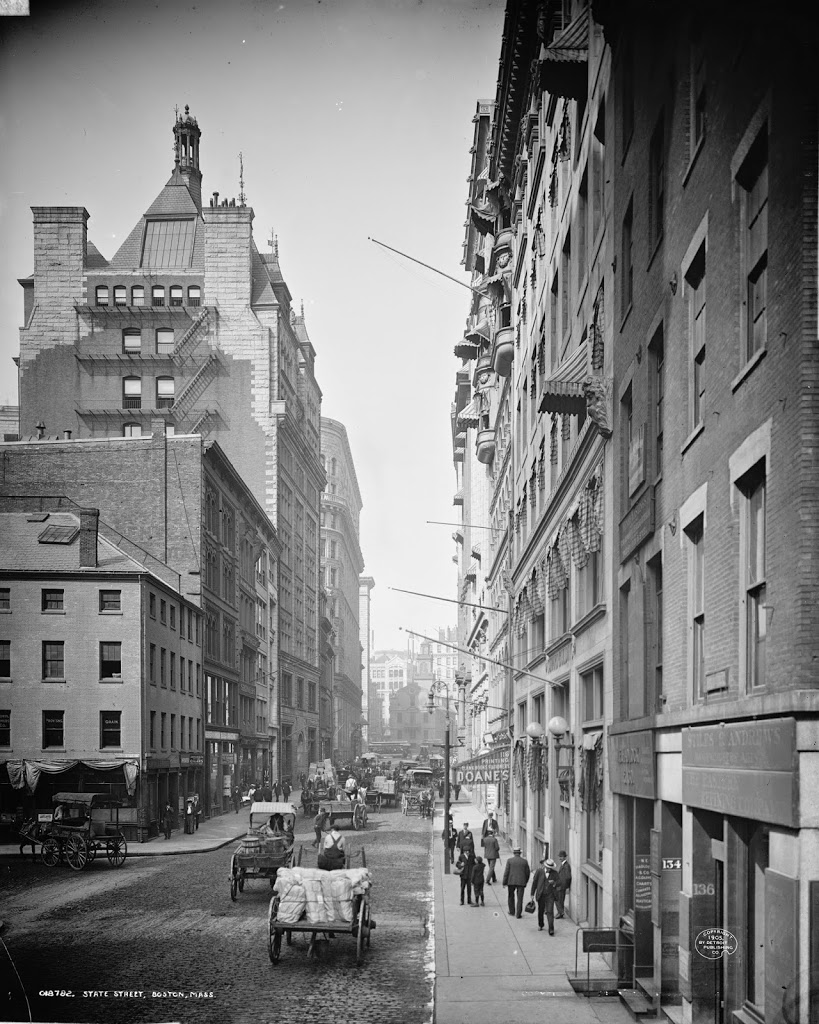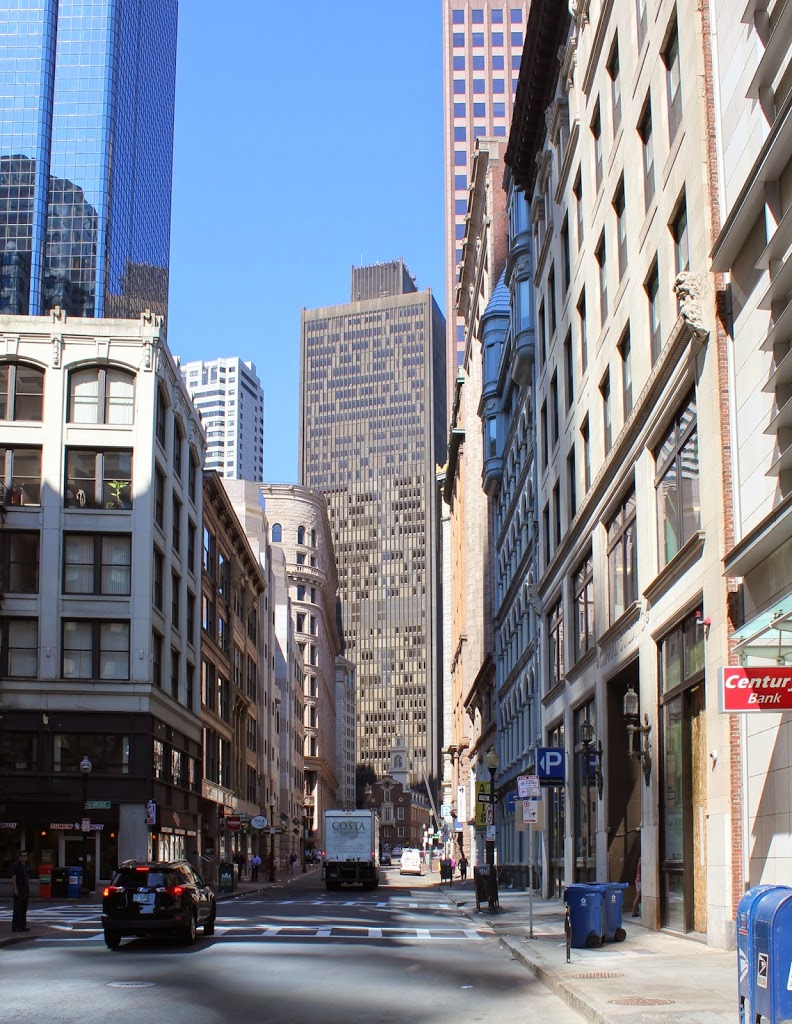Facing south at the corner of High Street (to the left) and Summer Street (to the right), following the Great Boston Fire of 1872. Photo courtesy of Boston Public Library.
The scene in 2014:
The Great Boston Fire of 1872 was one of the most devastating urban fires in American history, and this photo shows the scene near the epicenter on Summer Street. The fire began just a few blocks behind the photographer, leaving very little standing in the southern part of downtown Boston. The city recovered, though, and today this location is part of Boston’s financial district. However, while the buildings were rebuilt, Boston’s convoluted street network remained unchanged. Unlike many other major cities in America, and unlike even some other sections of Boston, downtown Boston does not have a regular street grid. The result is small, non-rectangular building lots like this one, a triangle bounded by Summer, High, and Federal Streets. In the 1970s, however, architects got creative and built the Fiduciary Trust Building, a hexagonally-shaped building that appears to be precariously balanced atop a much smaller base.

